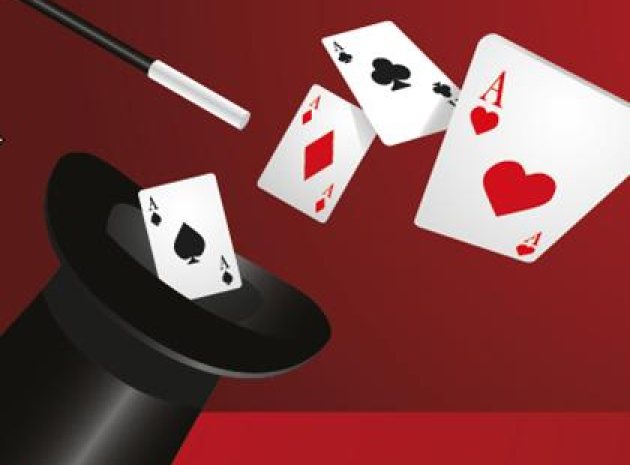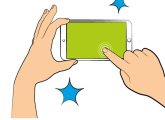Richard Wiseman, who started off as a professional magician, has a PhD in psychology and is currently Professor in the Public Understanding of Psychology at the University of Hertfordshire. Having studied the benefits of introducing magic to primary school children, he says that self-discipline and confidence are boosted when youngsters experience magic.
And when it comes to secondary school, there is a lot more that teenagers can take away from a magic show. Indeed, Wiseman’s research results, which involved working with children aged 10 -12 in Hertfordshire, indicate that self-confidence and self-discipline improved once the participants at the Wroxham School, in Potter’s Bar, and the JFK school, in Hemel Hempstead, had been taught two magic tricks which they could then perform themselves.
Scott Cuthbertson, known as ‘Scotland’s Magician,’ has twenty years of making magic behind him. He explains that to build self-esteem a young person needs genuine praise, which can sometimes get lost in the drive for academic success. “The magician is a special person,” he says. “And when he looks at a youngster and says, ‘Well done, you were brilliant,’ it should give them a warm glow. I started my magical journey by being an assistant to a magician while I was on holiday. I was the only kid at the show. I was given a magic wand, I waved it, said the magic word, impossible things happened, and the audience applauded me… For the rest of the holiday, I was known as ‘Scott the Magician’ – this made me feel really good.”
Magical thinking
For younger children, the magician doesn’t want to ruin the spectacle by demonstrating exactly how a particular trick works; but at secondary school, as well as being entertaining, illusions are a great opportunity to benefit the enquiring minds of students with some explanations from science teachers about they are created.
Understanding magic can teach young people a lot about observation and the illusion of choice. In addition, older students may be interested in the ways magicians create illusions, and why the brain filters out many items and substitutes them with what we know to create a skewed reality.
Magic workshops also teach a variety of additional skills, such as effective communication, confident presentation, and theatrical techniques required to hold audience attention – all of which go a long way in creating quality interactions both inside and outside the classroom.
Indeed, Cuthbertson is an advocate for the potential effect of magic on improving critical thinking skills. “A lot of the audience is trying to figure out the tricks as the show goes along, but as a performer I know the routines so well; I am focused entirely on the performance aspect and I don’t have to really think about how the trick works,” he explains. “An amateur practises until he gets the trick right, a professional practises until he can’t get it wrong.” This is a good line for teachers to remember when teaching new skills – if anything is worth doing, it is worth doing well.
Adolescents are usually keen to learn magic tricks as it gives them an edge over their peers – they can entertain at social gatherings, making them the centre of attention and giving them that ‘wow’ factor. “All the time I’m asked to show people how I did a particular trick,” admits Cuthberston. “Everyone wants to be famous and magic is an ‘in’ to that world. Magic also makes you special in your family and circle of friends. So, if you are a bit shy or socially awkward, showing people a good magic trick can elevate your status.”
“Magic can also give the audience something to aspire to,” he adds. “You don’t need to be on TV to be a great magician. However, with our celebrity culture, magic is a good way in to showbiz for the more theatrical student.” It is also a way of using popular culture to help students learn.
The science bit
When asked about a type of magic that demonstrates a basic law of physics, Cuthbertson says, “Actually, all my magic defies the laws of physics. It’s hard to describe an effect here, but at the Glastonbury workshop, we passed a solid item through a solid item, and made a poker chip vanish.”
Cuthbertson believes it is up to the science teachers to share with students how the process of tracking movements with our heads and eyes can fool us into believing we saw something that wasn’t really there (not many magicians are willing to give away their secrets!)
The classic example is the magician who throws a ball into the air twice and on the third throw it vanishes into thin air – how? He palmed the ball before the third throw and used body movement and eye movement to fool us into believing we saw it go up into the air; yet people are convinced they ‘saw’ the ball on that third throw.
By putting a variety of coins on the table, then asking a volunteer to choose one and hold it tightly, while the magician engages in some patter, will heat the coin sufficiently for the magician to distinguish which one has been chosen once placed against his forehead. It is simple science, but such an engaging way for students to learn.
Once teachers start explaining some of these tricks, there could very well be an increase in students wanting to study psychology and neuroscience. After all, in the last twenty years enormous strides have been made in neuroscience, but there remains a vast amount still to be unraveled concerning the mysteries of the human brain and how we interpret reality.
For educators in the field of business studies, awareness of the illusion of choice can help students see through advertisers’ and marketers’ tricks. A magician will often force a choice onto his audience so quickly and skillfully that those involved don’t realise it. He can also direct them to a particular choice with such subtle eye or hand movements that the person may not even consciously be aware of this influence.
Marketers also use the illusion of choice in order to direct us towards ‘choosing’ certain products, in particular through pricing strategies. Why not use magic to teach students the laws of business?
Finally, there is the issue of engagement. Holding students’ attention can be difficult, but when you give them a problem to solve that is pitched as involving the performance of a magic trick, then they can spend hours on it. They are putting their cognitive skills to the test in order to master the illusion. Besides, currently magic seems to be riding high on a wave of popularity, with both TV and live shows a hot topic for teens. “It comes in waves,” explains Cuthbertson. “We had David Blaine, then Dynamo, and now Jamie Raven, who was a big hit on Britain’s Got Talent.”
In other words, introducing magic into schools ties in with popular culture and has huge potential to encourage cognitive development and boost confidence… surely an impressive rabbit to pull from any educator’s hat!
About the author
Nicola Davies is a psychologist and freelance writer with a passion for education. You can follow her on Twitter (@healthpsychuk) or sign up to her free blog: http://healthpsychologyconsultancy.wordpress.com/









